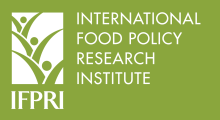Resource information
"An economywide, multimarket model is constructed for Ghana and the effects of agricultural soil erosion on crop yields are explicitly modeled at the subnational regional level for eight main staple crops. The model is used to evaluate the aggregate economic costs of soil erosion by taking into account economywide linkages between production and consumption, across sectors and agricultural subsectors. To fill a gap in the literature regarding economic cost analysis of soil erosion, this paper also analyzes the poverty implications of land degradation. The model predicts that land degradation reduces agricultural income in Ghana by a total of US$4.2 billion over the period 2006–2015, which is approximately five percent of total agricultural GDP in these ten years. The effect of soil loss on poverty is also significant at the national level, equivalent to a 5.4 percentage point increase in the poverty rate in 2015 compared to the case of no soil loss. Moreover, soil loss causes a slowing of poverty reduction over time in the three northern regions, which currently have the highest poverty rates in the country. Sustainable land management (SLM) is the key to reducing agricultural soil loss. The present findings indicate that through the adoption of conventional SLM practices, the declining trend in land productivity can be reversed, and that use of a combination of conventional and modern SLM practices would generate an aggregate economic benefit of US$6.4 billion over the period 2006–2015. SLM practices would therefore significantly reduce poverty in Ghana, particularly in the three northern regions." -- Authors' Abstract"


